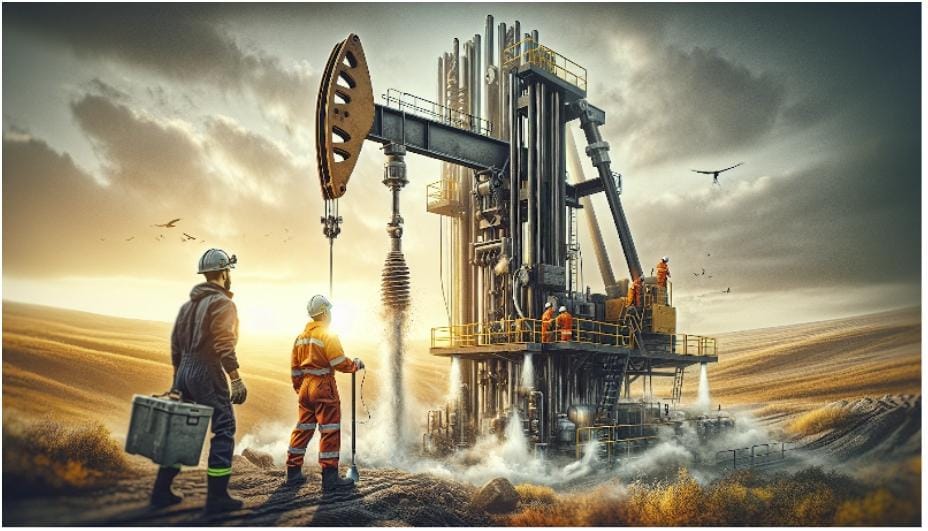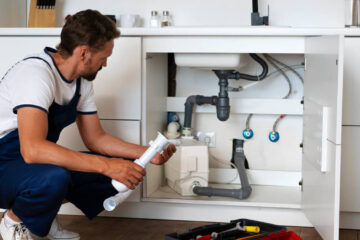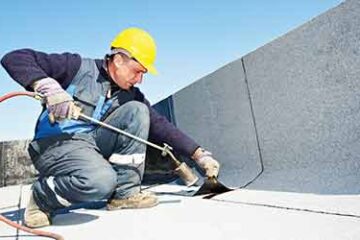Introduction to Well Drilling Rigs
Well drilling rigs are essential equipment for accessing groundwater resources. These machines are designed to drill deep into the earth’s surface, creating a pathway for water to be extracted. With the increasing demand for clean water, well drilling rigs have become an indispensable tool for both residential and commercial purposes.
Types of Well Drilling Rigs
There are several types of well drilling rigs available in the market, each designed for specific applications and drilling conditions. Some of the most common types include:
Rotary Drilling Rigs
Rotary drilling rigs are the most widely used type of well drilling rig. They employ a rotating drill bit that cuts through rock and soil, creating a borehole. Rotary drilling rigs are suitable for drilling through various formations, including hard rock and unconsolidated sediments.
Cable Tool Drilling Rigs
Cable tool drilling rigs, also known as percussion drilling rigs, use a heavy drill bit that is repeatedly dropped into the borehole to break up rock and soil. This method is slower than rotary drilling but is effective in certain geological conditions.
Auger Drilling Rigs
Auger drilling rigs use a helical screw-like drill bit to bore into the ground. They are best suited for drilling in unconsolidated formations, such as sand and gravel. Auger drilling rigs are typically used for shallow wells and environmental sampling.
Factors to Consider When Choosing a Well Drilling Rig
When selecting a well drilling rig, several factors must be taken into account to ensure the best performance and value for money. These factors include:
Drilling Depth and Diameter
The drilling depth and diameter of the well are crucial factors in determining the type and size of the drilling rig required. Deeper wells and larger diameters necessitate more powerful and robust drilling rigs.
Geological Conditions
The geological conditions of the drilling site, such as rock type, hardness, and stability, impact the choice of drilling rig. Different rigs are designed to handle specific geological challenges, so it is essential to assess the site conditions before making a decision.
Mobility and Accessibility
The mobility and accessibility of the drilling rig are important considerations, especially for remote or challenging drilling locations. Compact and lightweight rigs are easier to transport and set up, making them suitable for sites with limited access.
Budget and Cost-Effectiveness
The budget available for the drilling project is a significant factor in selecting a well drilling rig. It is essential to balance the initial cost of the rig with its long-term cost-effectiveness, considering factors such as fuel consumption, maintenance requirements, and operational efficiency.
Benefits of Investing in a High-Quality Well Drilling Rig
Investing in a high-quality well drilling rig offers numerous advantages, including:
Increased Productivity
High-quality well drilling rigs are designed for optimal performance, enabling faster and more efficient drilling operations. This increased productivity translates to reduced project timelines and lower overall costs.
Enhanced Durability and Reliability
Well-constructed drilling rigs are built to withstand the rigors of demanding drilling conditions. They feature robust components and advanced engineering, ensuring enhanced durability and reliability over the long term.
Improved Safety Features
Top-tier well drilling rigs incorporate advanced safety features to protect operators and minimize the risk of accidents. These features may include emergency shut-off systems, protective guards, and ergonomic designs that reduce operator fatigue.
Versatility and Adaptability
High-quality well drilling rigs are often designed with versatility in mind, allowing them to be adapted to various drilling applications and site conditions. This adaptability maximizes the rig’s utility and ensures a better return on investment.
Maintenance and Upkeep of Well Drilling Rigs
Proper maintenance and upkeep are essential for ensuring the longevity and optimal performance of well drilling rigs. Regular maintenance practices include:
Lubrication and Greasing
Regularly lubricating and greasing the moving parts of the drilling rig reduces wear and tear, prevents corrosion, and ensures smooth operation. Following the manufacturer’s recommended lubrication schedule is crucial for maintaining the rig’s performance.
Inspections and Repairs
Conducting regular inspections of the drilling rig helps identify potential issues before they escalate into major problems. Prompt repairs and replacements of worn or damaged components are essential for maintaining the rig’s efficiency and safety.
Cleaning and Storage
Keeping the well drilling rig clean and properly stored when not in use helps prevent damage from exposure to the elements and prolongs its lifespan. Cleaning the rig after each use and storing it in a secure, dry location are important aspects of maintenance.
Choosing the Right Manufacturer and Supplier
Selecting the right manufacturer and supplier is crucial for ensuring the quality and reliability of your well drilling rig. When evaluating potential manufacturers and suppliers, consider the following factors:
Reputation and Experience
Look for manufacturers and suppliers with a proven track record of producing high-quality well drilling rigs. Research their reputation in the industry and seek feedback from previous customers to gauge their level of expertise and customer satisfaction.
Product Range and Customization Options
Consider the range of well drilling rigs offered by the manufacturer or supplier and their ability to customize rigs to meet your specific requirements. A wide product range and customization options ensure that you can find the perfect rig for your needs.
After-Sales Support and Training
Evaluate the level of after-sales support and training provided by the manufacturer or supplier. Reliable technical support, spare parts availability, and comprehensive training programs are essential for ensuring the smooth operation and longevity of your well drilling rig.
Warranty and Guarantee
Investigate the warranty and guarantee terms offered by the manufacturer or supplier. A robust warranty and guarantee demonstrate the company’s confidence in their products and provide peace of mind for your investment.
Innovative Features in Modern Well Drilling Rigs
Modern well drilling rigs incorporate innovative features that enhance their performance, efficiency, and user-friendliness. Some of these features include:
Automated Controls and Monitoring Systems
Advanced automated controls and monitoring systems streamline the drilling process, allowing for precise operation and real-time data collection. These systems optimize drilling parameters, reduce operator fatigue, and improve overall efficiency.
Energy-Efficient Designs
Energy-efficient well drilling rigs are designed to minimize fuel consumption and reduce environmental impact. Features such as high-efficiency engines, regenerative braking systems, and optimized hydraulic systems contribute to improved energy efficiency.
Noise and Vibration Reduction
Innovations in noise and vibration reduction technologies make modern well drilling rigs more environmentally friendly and operator-friendly. Reduced noise and vibration levels improve working conditions and minimize disturbance to surrounding areas.
Remote Monitoring and Diagnostics
Some advanced well drilling rigs feature remote monitoring and diagnostic capabilities, allowing for real-time performance tracking and troubleshooting from a distance. This technology optimizes maintenance schedules and reduces downtime.
Case Studies and Success Stories
Exploring case studies and success stories of well drilling rig applications can provide valuable insights into their effectiveness and versatility. Some notable examples include:
Rural Water Supply Projects
Well drilling rigs have played a crucial role in providing access to clean water in rural areas. Successful projects have demonstrated the impact of reliable well drilling equipment in improving the quality of life for communities.
Emergency Response and Disaster Relief
In the aftermath of natural disasters, well drilling rigs have been deployed to quickly establish emergency water supplies. These rigs have proven invaluable in providing critical water resources to affected populations.
Mining and Exploration
Well drilling rigs are extensively used in the mining and exploration industry for mineral prospecting, geotechnical investigations, and dewatering operations. The success of these projects relies on the performance and reliability of the drilling equipment.
Environmental Considerations and Sustainable Drilling Practices
As the demand for well drilling grows, it is essential to consider the environmental impact and adopt sustainable drilling practices. Some key considerations include:
Minimizing Water Waste and Contamination
Implementing measures to minimize water waste and prevent contamination during the drilling process is crucial for preserving water resources. This includes proper management of drilling fluids, responsible disposal of waste materials, and adherence to environmental regulations.
Reducing Carbon Footprint
Adopting energy-efficient well drilling rigs and implementing sustainable practices can significantly reduce the carbon footprint of drilling operations. This includes optimizing fuel consumption, using renewable energy sources, and minimizing transportation requirements.
Rehabilitation and Restoration of Drilling Sites
Proper rehabilitation and restoration of drilling sites after the completion of projects are essential for minimizing long-term environmental impact. This involves implementing soil stabilization measures, revegetation efforts, and adhering to local environmental guidelines.
Future Trends and Innovations in Well Drilling Rigs
The well drilling industry is continuously evolving, with new trends and innovations shaping the future of drilling rigs. Some notable developments include:
Automation and Robotics
The integration of automation and robotics in well drilling rigs is expected to increase in the coming years. These technologies will enhance efficiency, precision, and safety while reducing the need for human intervention in hazar.
Keep an eye for more news & updates on DiscoverTribune.Org!




